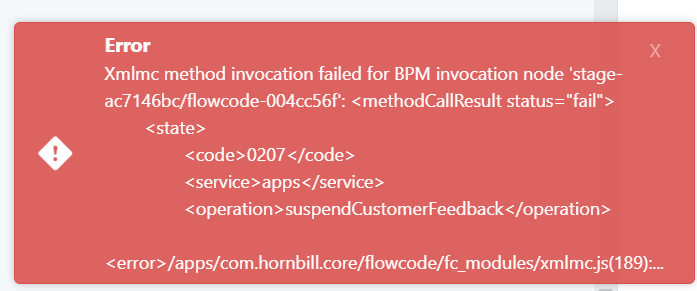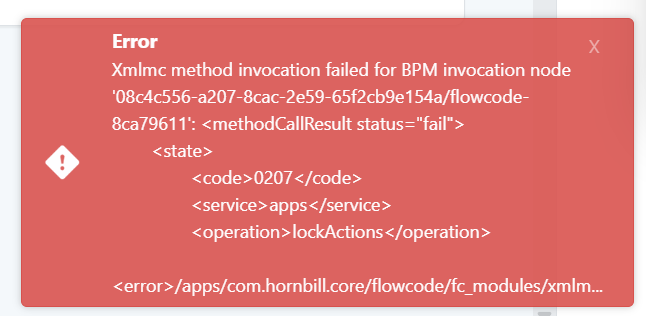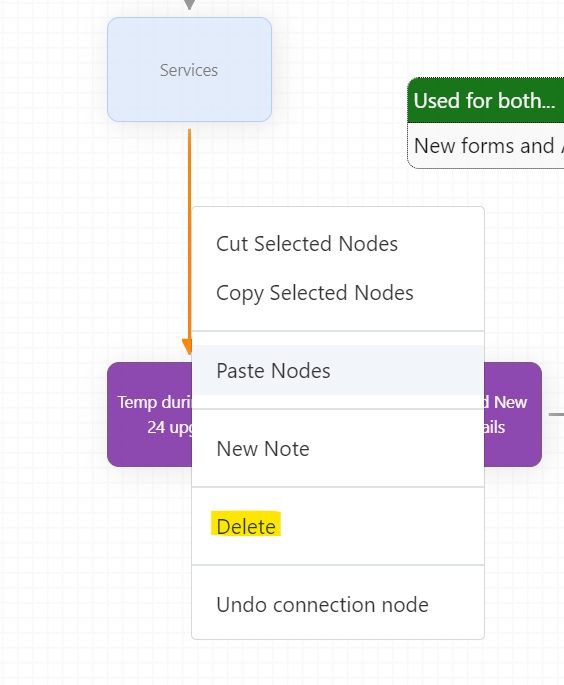-
Posts
1,267 -
Joined
-
Last visited
-
Days Won
28
Content Type
Profiles
Forums
Enhancement Requests
Posts posted by Berto2002
-
-
I had one yesterday
-
I have cases where I want to tally things (e.g. to count how many sub-tickets are created from the Problem record). At the right time, the workflow tries to append a '1' to a field that already contains one or more '1's.



It doesn't work. I only ever have one '1' in that field. My logica is that it's an integer field, '1' is an integer and the resulting field contents of '11' or '111' are integers so this should work.
I have another workflow that tallies the number of times a standard change template is used and that does work. The config is the same as above but using Custom G (a text field):

My request therefore is why are integers not appending?
If by design, why?
If bug, kindly rectify?
-
@Ben Maddams I have only tried this on individuals' mailboxes and they need to make this permissions update:
The global admins sounds enough in terms of OAuth permissions...
When you run this, do you have "continue on fail" set to "no"? This traps more issues in the log; and nothing in the log?
-
It's working for us now...
Fixed in a recent drop:
What's your error, the same?
-
We use the Cloud node to add Change entries to the Microsoft Office Outlook calendars of some of the stakeholders.
We've just discovered the entries are starting earlier by one hour; which is not great since the calendar is supposed to tell them the agreed change start time. Silly me, I forgot that the system processes everything in UTC so an adjustment is needed in the (UK) summer months to +1hr now we are in BST.
I previously implemented the below workflow to make the adjustment. It requires admins once a year to manually re-enter a date in the Workflow to make that 1 hour adjustment if required. Logic is:
-
If date is < AutumnClockChange then go the route for +1 hour for BST
- This means after October-ish, no extra hour is added
-
At the SpringClockChange we then set the expression date as the AutumClockChange for the new current year
- This means, from March-ish to October, the extra hour is added
But the question it whether anyone else has a better idea, please, or to automate this. For example, I wish the UI daylight savings time flag was available to workflow could look-up and act accordingly...
Thanks
-
If date is < AutumnClockChange then go the route for +1 hour for BST
-
-
@David Hall er, and I think the Questionnaires are missing? We do have Impact Assessments configured and working in the Request UI but none are showing here for edit (regardless of the filter I select of Active, Draft, Offline....
-
However I confirm I could go into the Assessments directly (not from the search) and while all the statuses show as active, when opening, they were not so I have re-set as Active and saved and will check next week if this restores the impact assessment outcomes.
I accept your confirmation that this bug/nuance was inadvertently introduced in a release

-
@David Hall something is broken in teh search. I cannot get to the Assessments configuration. It's 404 from search
I click here:

And I get this:
-
@HGrigsby, yes looks like we've spotted the same thing. Impact Assessments are not working after the latest release; this has happened before.
I reported it in the linked but we have a default Impact of Medium which kicks-in if the impact Assessment fails.
Needs fixing ASAP
-
You could build your own 'repeating' workflow for this so the first Request the user logs would 'spawn' additional requests.
- ICF captures first device in field_1 and then it presents option to enter a second device (field_2) and so on up to the limit you would allow in one ticket
- Workflow is configured to spawn a build ticket for the details from field_1 and then decide if if field_2 is populated; and if so to spawn another ticket for action
- Repeat the above for the same number of these iterations in your workflow as you have options to enter multiple devices in the ICF
The end result is one ICF spawns as many build requests as you want to provide for. Just tell the users the limit in one ticket.
You could have this Workflow as stand-alone (so that Request always closes once it's spawned the required number of build tickets) or have it act as the 'parent', collecting and feeding-back the build outcomes from the 'silent child' tickets it spawned
-
@Gareth Cantrell that is very useful to know and it makes sense as a design. So the only storage issue we may therefore have is the 245 versions of our generic workflow

-
I have been running a test for a change release today but spotted the absence of the Low/Medium/High that normally appears as you progress through the Impact Assessment. Last time this happened, it was found that the Impact Assessment was not setting the Impact so we put-in a workaround to default to Medium if none was found. But I think this could cause issues for some.

-
@will.good, @Adrian Simpkins, @HGrigsby, @Gareth Cantrell @EWA would be interested in your thoughts about this.
@James Ainsworth When I download my two most common workflows (generic incident and generic request), they are 1.5Mb approx in txt file. Visually, see screenshot for how one of these standard workflows looks for reference of what 1.5Mb is (plus one smaller stage for closure). We get through 200 of these a week so are we really talking about 300Mb? Other customers much more of course. I guess database compression etc makes storage much lower but how much lower?
James, can you please ask Devs is that is the size of a retained BPM against each Request vs it's text file size (or other stats like the percentage of storage taken by a workflow vs the request data itself)? If this is a significant number (and I think it must be if the full integrity of the workflow is maintained for every historical Request), there will be a clear case to enable discarding the workflow/BPM according to a system setting and would likely have it set for 1 year +. Historical tickets for us are really only ever about the Request data and are never looked at in order to see HUD information.
I would venture that the space saving opportunity here is so significant for HB customers and HB that it may even be worth coding a 'snapshot' view of the HUD which is set as part of the BPM/workflow removal process; so the HUD remains but as a static view.
I remember at HUG someone mentioned you were considering more about the data retention now the system is maturing; and this could be a great enhancement to put on the list.
-
And how about the idea that much data could be saved if the BPM itself was removed from the Request after a certain time, like the Log is?
-
In addition to the lock-unlock node suspend causing errors and the suspend for Assets causing errors, we are now also seeing it in suspend pending customer feedback.
Request Hornbill please address these suspend issues with rapid patch, it's making all the admins run around to restart broken workflows


-
 1
1
-
-
We've started seeing this now also. Hoping for a patch on this or faster-than-usual release. This is similar to the issue with the Suspend for Asset. These two issues are starting to create the perception in the user base that the product is getting unstable.

-
 2
2
-
-
I recall in ESM there were to be configurable request types so customers can be more flexible
-
Old documentation on storage: Managing Instance Storage Usage - Hornbill which I hope will be migrated over at some point to new KB.
I think there is an opportunity for an enhancement here @James Ainsworth. At present only the logs seem to be deleted after 7 days but we could set a retention also for the workflow (aka BPM) to be deleted from Completed Requests. Hornbill and customers could save a huge amount of storage (costs) since the BPM config files can be Mb each?
-
-
I stand corrected. I thought the BPM/workflow also was removed but it seems it's not.
I have also gone way back and can see each BPM/workflow attached to old tickets.
There appears to be no process for the BPM to be removed.
-
The Workflow instance that is created for a Request is removed, I think along with its log, 7 days after the Request reaches the end, assuming it's not in error. There are quite a few posts around from HB staff confirming this.
The way to ensure they don't stay around longer is to have a housekeeping regime to check all workflows reach their full and proper end node. Any left in a perpetual state of suspended, hold, or in failed state will stay around forever and use-up storage.
For example, one of our reports looks for those in closed statue with BPM status of 4 (suspended). If a request is closed and the BPM is not ended then we have a workflow issue so we analyse the requests and then fix the issue allowing a close before it ends and then cancel/manually address the offending tickets.
-
ooh no, should be required
+1
-
 1
1
-
-
We used to be able to select a connector or node in ICF edits and press delete to remove it. That is no longer working and we need to right click and select Delete from the menu. Please can this be re-instated?
PS it still works for Workflow to use the delete key.





















Unable to append (integer) to integer field - is this bug or by design?
in Service Manager
Posted
Thanks @Steve Giller I will migrate to a non-integer field.